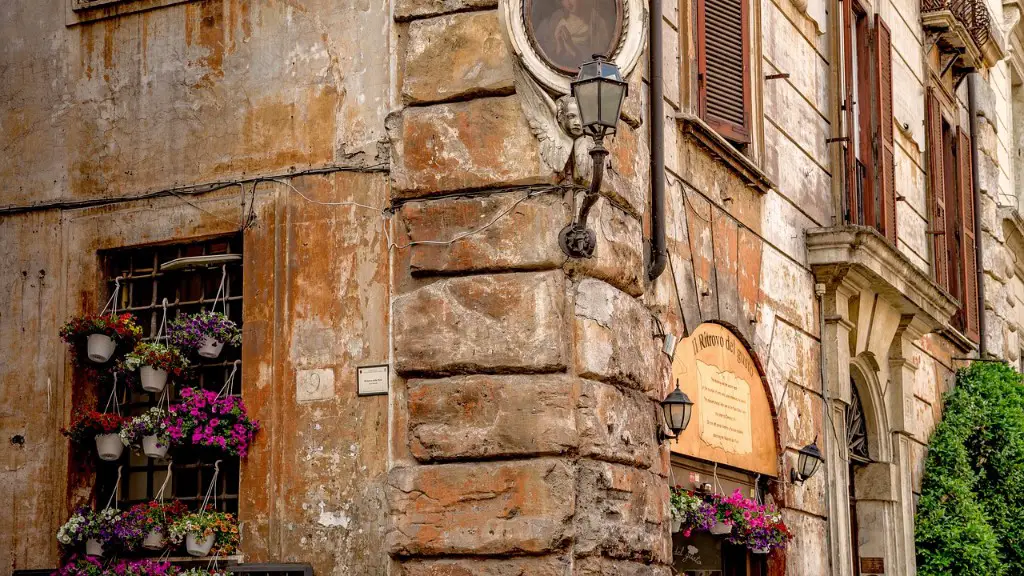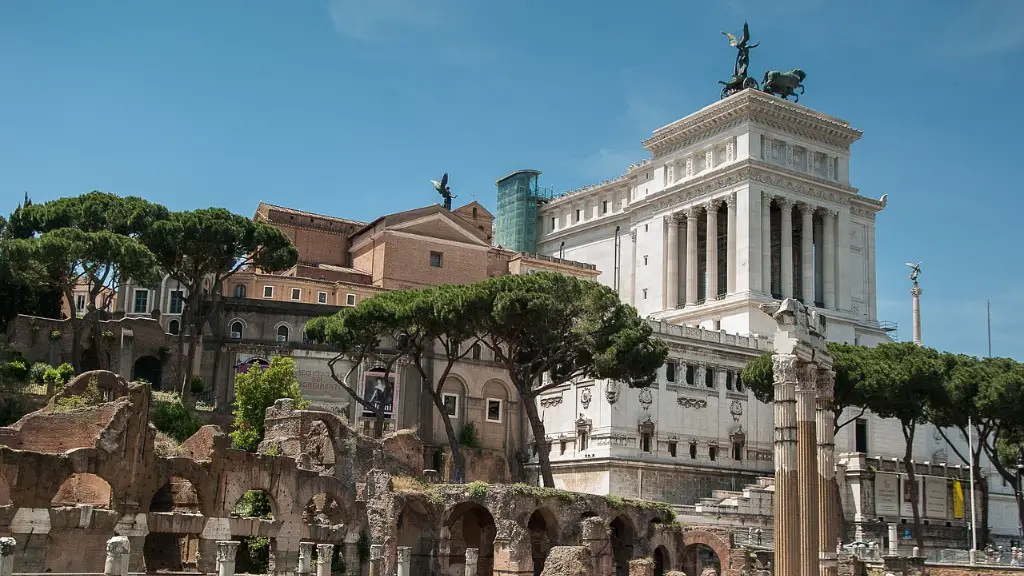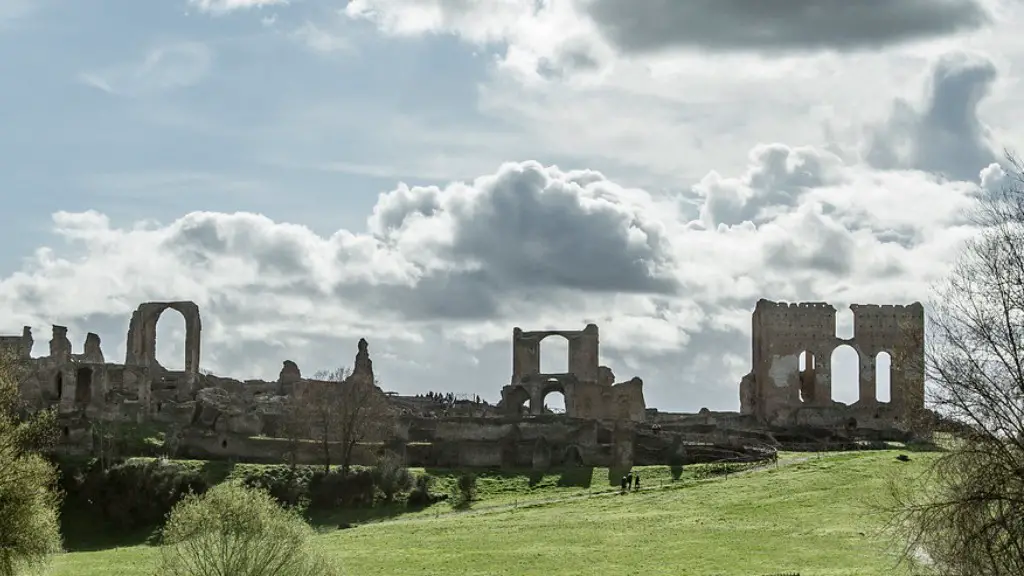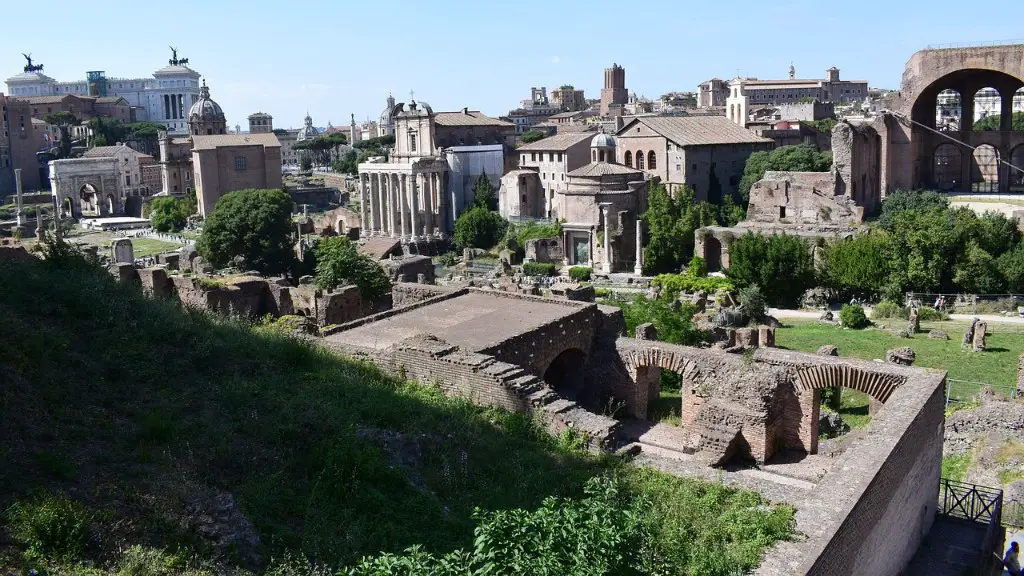Ancient Roman civilization is remembered for its achievements in construction and engineering, but their impact on farming tools and techniques is still evident to this day. The Roman Empire was a highly sophisticated society and its tools were often ahead of their time.
One of the most iconic tools used by the ancient Romans was the plow. Developed around the third century B.C. by the Greeks, the plow opened up previously uncultivated land and allowed farmers to raise more crops with less labor. The plow also played a vital role in land reclamation efforts, allowing farmers to reclaim land that had previously been unusable due to erosion or flooding.
The Romans also had access to the modern scythe, a tool used for cutting down crops. It was a versatile tool that allowed the Romans to harvest grains and other crops quickly. Additionally, the Romans’ use of slaves meant that larger fields could be cleared much more quickly than before. This helped the empire’s agricultural production reach levels that would not be seen again until the industrial revolution.
The Romans also used a variety of other tools for farming, such as threshing machines and hand-held sickles. Threshing machines removed the grains from plants, while sickles were used to harvest plants in a faster manner. Furthermore, Roman farmers used the shovel, mortar and pestle and large troughs to mix and transport soil, water and manure. They also used a wide variety of tools, such as hoes, rakes and flails, to tend to their farms.
The Roman view of farming was also slightly different from that of the Greeks, where they were of the belief that because farming was extremely laborious, it should be done with machines as much as possible. This idea also incorporated the use of animals to aid in agricultural labor. Oxen, horses and mules were used to pull plows and cart loads of goods, as well as to provide fertilizer for the soil. This allowed the Romans to increase their production even further.
The ancient Romans also implemented crop rotation, a practice that had previously not been used by the Greeks. Crop rotation is the process of alternating crops from different families each year in order to maintain soil fertility and prevent soil depletion. This practice was one of the main reasons that the Romans succeeded in farming for so long and on such a large scale.
Finally, the Romans also utilized irrigation systems to refresh the soil with water and help crops flourish. These systems were often designed using aqueducts, which were made of stone and directed water to areas of land in need. This practice allowed the Romans to grow food in areas that otherwise lacked access to water, thus increasing their ability to feed the empire.
Animal Power
The use of animal power was instrumental in Roman farming. Oxen, mules and horses were used to pull plow and wagons for transport. Animal labor was also essential for tilling soil and irrigating land. Oxen, for example, were used to pull uprooted trees and other vegetation, allowing farmers to clear large tracts of land quickly. Oxen were also used in the process of crop rotation and as a form of fertilizer. The use of animals as laborers in this way enabled the Roman Empire to cultivate land on a large scale and achieve unprecedented levels of agricultural productivity.
In addition to providing a source of labor, animals were also used as a source of food. The Romans raised livestock, such as sheep and pigs, which provided them with a source of meat, wool and leather. The Romans also consumed a variety of vegetables, including cabbage, onions and garlic. They used spices to make meals more flavorful, and also made use of medicinal plants for medicinal purposes.
Finally, animals were a source of entertainment for the ancient Romans. Animal fights and chariot races were popular sports and would often be held in the presence of the emperor, who would place bets on the outcomes. Animal events were also held on significant days in the Roman calendar, such as feast days and the Saturnalia.
Storage Tools
The Romans also used several different tools and techniques for storing food. Ceramic amphorae were used to store and transport liquid goods, such as wine and oil. As well, they were used to store grains and legumes. Additionally, the Romans used wooden barrels and woven baskets to hold fruits, vegetables and other perishable items.
The Romans were also the first to develop cheese-making, which allowed them to store large quantities of dairy products. Fermented foods, such as olives, were also stored in barrels and amphorae. This allowed the Romans to preserve these goods and transport them over great distances.
To combat pests and rodents, the Romans developed a variety of methods, including the use of traps, smoke and natural oils. Additionally, to protect their stored goods from spoiling, the Romans used sulfur and ashes mixed with water. This was one of the earliest forms of food preservation.
Tools of Measurement
Measuring instruments used by the Romans have been discovered in the former empire from several archaeological sites. One of the most commonly used measuring instruments was the measuring wheel, or chorobates. This wheel was used for measuring long distances, such as when surveying land. They also used handheld devices such as sundials, gnomons and clepsydras to measure time, as well as devices known as “libra” to measure distance and capacity.
In addition to measuring devices, the Romans also developed a variety of instruments used to cultivate crops, such as the winnowing fan, a device used to separate grain from its husk. The Romans also employed other tools such as sickles and flails to harvest crops. Some of these techniques are still in use today.
Fertilizing Tools
The ancient Romans were highly conscious of the importance of healthy soil for effective farming. To this end, the Romans developed a variety of tools and techniques to ensure that soil quality was always maintained. For example, the Romans used iron-ploughshare to break up the soil and mix it with animal dung, which provided essential nutrients.
The Romans also utilized green manures, which are plants that are seeded and left in the field over winter to regenerate the soil. This practice allowed the Romans to increase yields and maintain soil fertility, something that was essential to their agricultural success.
Finally, the Romans developed a variety of plant additives, such as sulfur and nitrate, to produce more robust plants. These techniques allowed them to improve the quality of their soil and produce superior harvests.
Harvesting Tools
The ancient Romans developed a variety of tools and techniques to harvest their crops. One of the most widely used tools was the sickle, which was often made of bronze or iron. This was used to quickly and efficiently cut grain stalks. While this was a common harvesting tool, the Romans also had access to technology that allowed them to harvest grain mechanically.
The Romans also employed variations of the threshing board, which was used to separate grain from its husk. These could be operated by animals and slaves, or by a combination of both. Furthermore, the Romans mastered the art of drying and preserving food and conducted regular tests to confirm the quality of the product.
Finally, the Romans were also adept at preserving foods. Salt and vinegar were two methods they used to keep food from spoiling. Additionally, the Romans utilized a wide range of storage vessels, from amphorae to woven baskets, to preserve food for long periods of time. This allowed them to have access to food throughout the year.





